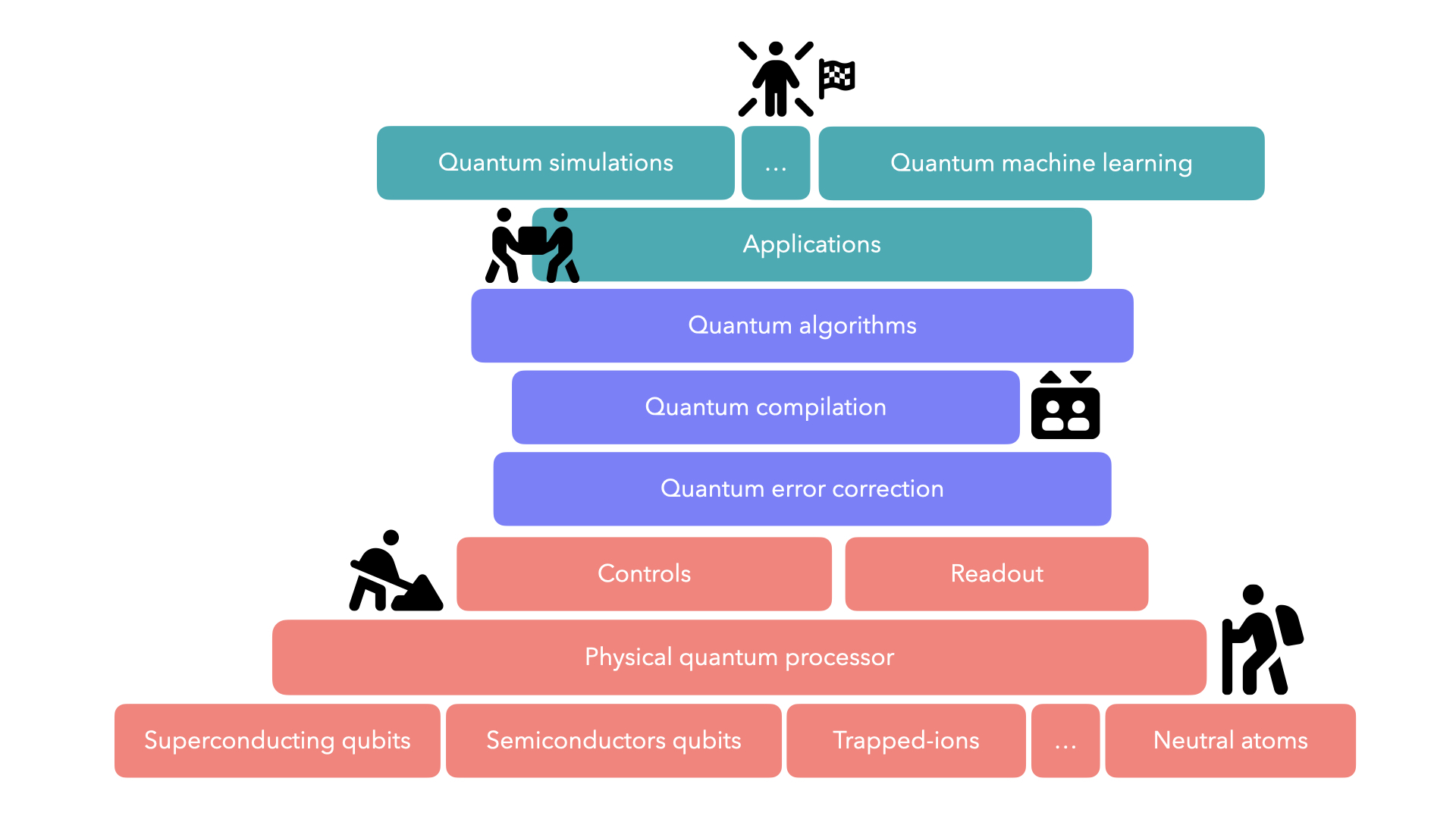Throughout my research journey, I have worked with various
quantum computing
platforms, including
trapped ions, neutral atoms,
and semiconductors. These experiences have
provided me with a comprehensive perspective on quantum
computing as a multifaceted field, encompassing
physical, logical, and
application layers. At the physical level, I
am particularly interested in qubit control.
My work in
quantum compilation
has allowed me to explore the logical layer, deepening my
understanding of the interactions between these levels. I am
also eager to explore different quantum applications.

The awarding of
the 2024 Nobel Prize in Physics to John J. Hopfield and
Geoffrey E. Hinton for their foundational work in machine
learning with artificial neural networks
underscores the growing significance of artificial
intelligence in scientific research. I believe that
integrating AI into physics investigations
is an emerging trend, offering the potential to significantly
accelerate discoveries and expand the boundaries of the field.
Advances in laser technology have propelled the rapid
development of neutral atom quantum computing platforms in
last few years. However, to successfully run quantum
algorithms on quantum platforms, high-level algorithmic
descriptions must be translated into executable hardware
operations through a compilation process, and the compilation
work for neutral atom quantum computing is still in the early
exploratory stages.
Neutral atom quantum computing systems can coherently move the
positions of atoms trapped in optical tweezers, allowing
real-time changes in qubit connectivity during computation
while satisfying the constraints of the optical tweezer array.
This dynamic connectivity, combined with the large number of
qubits, architecture design introduces new possibilities and
design challenges for quantum computing compilation. Rapidly
completing the compilation process and fully leveraging the
unique features of neutral atom quantum computing systems is a
critical and practically significant task.
The key advantages of Trapped Ion Calibration include long
quantum coherence times, high-precision single-qubit and
two-qubit operations, and high-fidelity operations between any
two qubits within the system. In trapped-ion quantum
computing, single-qubit operations typically involve
transitions between internal energy levels of the ions, which
can be achieved by addressing the target ion with laser
pulses. However, multi-qubit operations rely on the collective
vibrational modes of the ion chain, known as phonons. Critical
parameters such as ion positions, phonon frequencies, and the
strength of ion-phonon interactions are closely related to the
structure of the ion trap chip, the surrounding environment,
and the configuration of the trapping potential. To achieve
high-performance trapped-ion quantum computing, precise
calibration of system parameters is essential.
Semiconductor spin qubits are a promising candidate for
quantum computing, owing to their compatibility with existing
semiconductor fabrication techniques, long coherence times,
and scalability for large-scale integration. However, building
a robust quantum computer with semiconductor spin qubits faces
significant challenges, the most pressing being
noise—particularly charge noise. Charge noise accelerates
decoherence, leading to quantum state dephasing caused by
external disturbances, which undermines the stability and
reliability of qubit operations. To address this critical
issue, it is essential to first study and understand the
underlying mechanisms of charge noise.
